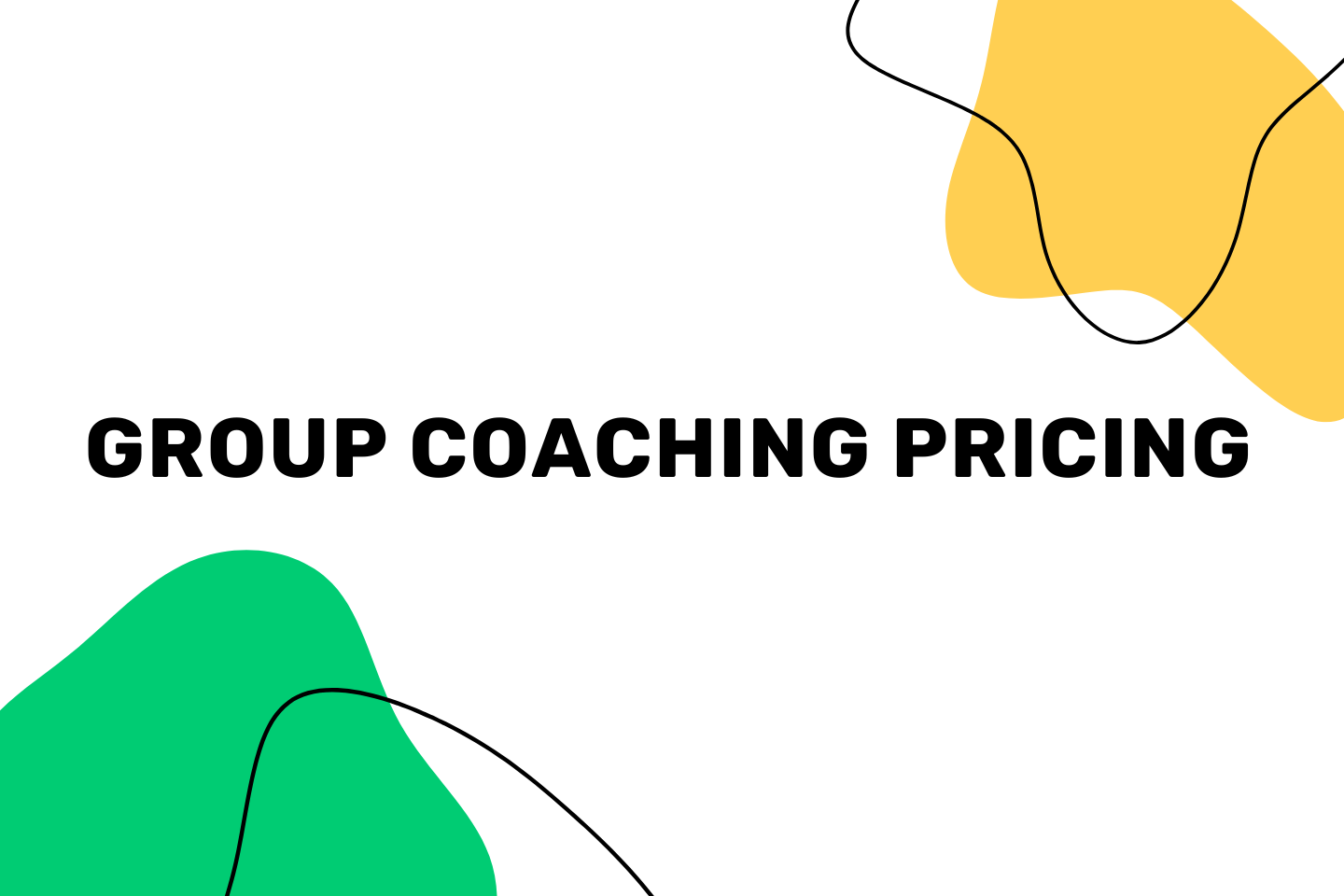Pricing is one of the biggest levers you can pull to increase the profitability of your coaching program, but most coaches don’t have a clear strategy when selecting their price point.
Therefore, if you’re only charging $1,000 for your program, yet half of your members would be willing to pay up to $2,000, you’re only making half the revenue you could be making.
So rather than trying to grow your coaching business by running more ads, closing more clients, and expanding your team, make sure you’ve optimized your price point.
Here is the exact approach award-winning coach Todd Herman uses to price his group coaching programs (which generate well over six figures!).
The Difference Between Coaches That Can Charge a Lot and Those That Can’t
If you’re preparing to launch a coaching program on how to start a business, you’ll find that there is a wide range of prices.
For example, some coaches charge $100 per hour while others charge $1,000 per hour. In fact, Todd has one on one clients that pay him $100,000 per year for one on one coaching.
So what’s the difference? And how can you close the gap?
Two main elements determine how much you can charge:
- Your existing authority in the space
- The specificity of your target audience and their outcome
Let’s discuss the first one, your existing authority within the space.
If people interested in your industry already know and respect your personal brand, it will be easier to sell them than someone with no trust or respect within the industry.
For example, if Susan Cain, who wrote the book Quiet: The Power of Introverts in a World That Won’t Stop Talking, wanted to sell a course on how introverts can get a promotion in the next six weeks, she could charge thousands of dollars.
However, if someone else with no following and minimal credibility in the space wanted to launch the exact same course, it’s unlikely they would be able to charge the same amount. If the newcomer did charge the same amount, they would probably have to do a lot more marketing to build the credibility and trust that Suan already has.
So what can you do to build your own credibility and authority?
- Help people achieve the results you plan to promise in your course. (i.e., if you advertise that you’ll help introverts get a promotion in 60 days, go manually help many people achieve that).
- Discuss the results you’ve helped people achieve on podcasts, blogs, and other publications where your target audience hangs out (i.e., find where introverts are hanging out and then share how you’ve helped other introverts get a promotion in 60 days.)
By gaining experience and sharing your client’s results with others in the industry, you’ll eventually build a personal brand in the industry. Once you have a strong personal brand, you’ll find that it drives leads organically with minimal additional maintenance, and you can charge significantly more.
Now let’s talk about the second element; The specificity of your target audience and their outcome.
By niching down to a very narrow audience, you’ll be able to charge more as you will be able to create a more personalized offer. For example, if you’re a single 45 year old mom trying to lose a few pounds, you’d probably rather work with a coach who specializes in helping single 45 year old moms lose a few pounds rather than a generic fitness coach.
This is because the specialized coach will better understand:
- How to schedule gym time around the kids
- How to meal prep when you’re feeding a family
- How to build muscle for someone their age
Even if the other generic fitness instructor could provide the same information, people feel more comfortable purchasing from experts.
However, a common problem most beginner coaches face is that they think their offer is super specific when it’s still fairly generic.
For example, this probably sounds like a pretty specific coaching program idea:
How to Publish a Book For First Time Authors
Though Todd argues that this isn’t specific enough as plenty of established ghostwriting services already exist. Instead, he would change it to a much narrower target audience:
How to Publish a Book For Educators That Are First Time Authors
This example is from a real call he had with someone. She is a professor at an established university in California and has over twenty years of experience. However, she currently has minimal followers, making it difficult for her to stand out against more established coaches.
However, by adding the qualifier of how educators can publish their first book, she differentiates herself as she’ll be able to resonate with pain points specific to educators.
She can even hone her marketing message to resonate with pain points specific to educators and increase her conversion rates.
For example, the landing page copy can look something like this, “There are plenty of established ghostwriting companies out there. However, none of them have a method specifically designed to help an educator that really cares about writing high-quality content for their audience because they don’t understand x, y, and z challenges that are unique to educators.”
Therefore, select a really specific niche, build a personal brand in that niche and define the exact results your clients will get by taking your course. By doing that, you’ll be able to charge significantly more than the average coach.
How to Find An Initial Price Point
Keeping in mind the difference between how top performers and average coaches price their courses, how can you find your initial price?
Start by doing some research on your competitors, though look at more than just the price point. Instead, create a Google Sheet with the following categories:
- Price point
- Amount of accountability sessions/check-ins
- Amount of one on one time with the coach
- Templates, tools, etc.
- Content, worksheets, etc
- Support
This is important because a course with five videos is very different from a course with daily check-ins with the coach and detailed templates and tools in every lesson.
How to Justify The Value of Your Course
Once you have a ballpark idea of how to price your course, consider how your customers will perceive the value. Specifically, this formula will help:
Price + Offer + Transformation = Perceived Value
Price: This is how much you are charging for your coaching program.
Offer: This is everything included in your coaching program (templates, worksheets, video modules, accountability sessions, etc.)
Transformation: This is the impact you’ll deliver to your clients (helping them get a $5,000 promotion, doubling a $10,000 sales pipeline, etc.)
So if you’re wondering if the price point you picked is appropriate, the best way to figure that out is to play with these three variables (price, offer, or transformation).
Similarly, if you want to charge more for your course, you can adjust the offer and transformation.
Testing Your Pricing
Once you’ve defined a price point, you can always change it. If you’re debating between two price points, Todd recommends selecting a price point on the low side first and then increasing it if you have a lot of signups.
This is because your initial buyers might be angry if they purchased the program at a higher price point, and newer customers get it at a lower price.
However, if you find only a handful of customers are willing to pay the initial price point you set, you might need to lower it to make some sales. To avoid angering your existing customers, Todd recommends changing the offer itself by taking away some of the value and then releasing the course again with the new offer at a lower price point.
Then, if early purchasers give you any flack, you can say, “Well, we changed the offer. They aren’t getting X, Y, and Z value that you received when you purchased it at the higher price point.”
For example, he’s done something similar to this for the Pro program in his 90 Day Year business. After the first iteration of the program, he found that the people really liked the accountability aspect of the course, but many felt somewhat indifferent to the content.
Therefore, he changed the angle of the course from “how to simplify your business model” to “how to transform yourself into a professional entrepreneur that stays focused and executes high-value tasks.”
The only difference they made inside the course was taking away much of the content and instead focusing on the accountability aspect.
This way, they could lower the price point without angering initial customers.
However, if you want to test the price before launching it, Todd’s strategy is to run Google ads with different price points. For example, one Google ad might advertise the course at $1999 while another ad offers it at $1499. Then, the ads take the user to a landing page that says, “Thanks for your interest. Unfortunately, this course is filled right now. Please enter your name and email, and we’ll notify you when it opens up.”
This way, you can see which price points are most popular.
I’m Not Getting Sign ups – Is The Price Too High?
If you’re wondering if your price is too high, a key sign is that you aren’t getting signups. However, there are a lot of variables that play a role in how many sign-ups you receive.
For example, many free courses don’t receive any sign-ups, so clearly the price isn’t the only factor that would deter someone from taking the course.
Therefore, Todd recommends diving into the reviews at the end of the course to determine whether or not pricing is the issue.
In short, his goal is to always provide 10x value. So if the course costs $1,000, are the clients getting at least $10,000 worth of value? If not, the price point might be an issue.
If this is the case (you aren’t providing 10x value), part of the problem may be that the outcome isn’t valuable enough.
For example, if the course is on how to bake a cake, there is a limit to how much you can charge as there is a limit to the transformation’s value (assuming it’s a hobbyist and not, say, a wedding cake maker that could make a lot of money from knowing how to make a cake).
On the other hand, if your course teaches someone how to improve their sales funnel, that could be worth $15,000 if you helped them 10x their funnel. Though even in this example, the type of client you take on greatly impacts how much you’ll be able to charge.
For example, if you 10x the sales funnel of someone currently doing $15,000 per month in sales, you’ll be able to charge a lot more than if they are currently only doing $1,000 per month in sales.
Final Thoughts
Pricing is one of the single most important levers you can pull to significantly increase the profitability of your course. So if you’re just guessing right now, use these tips to evaluate your group coaching pricing strategy.
As a large part of increasing your pricing involves elevating the client’s experience, consider using a cohesive coaching platform like upcoach. It provides everything a coach needs to deliver a five star experience from habit tracking and accountability groups to lesson modules and to-do lists. You can try it out for yourself or sign up for a demo today.

